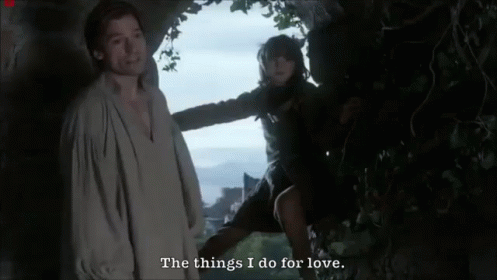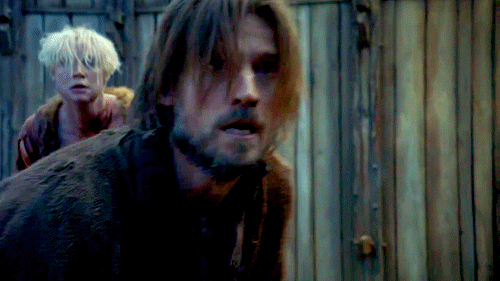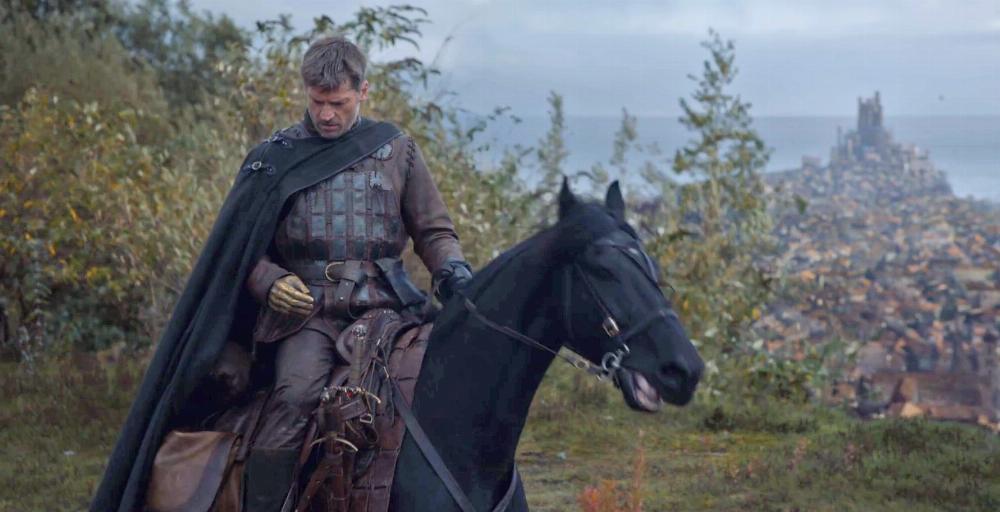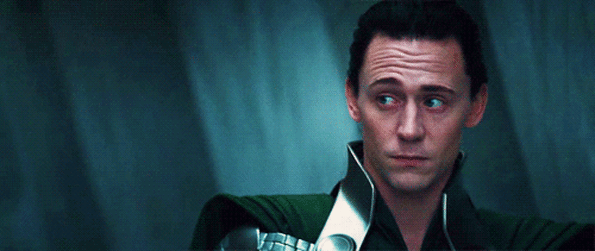Writing a redemption arc for a character who overcomes their inner flaws can be extremely satisfying, for both the creator and the audience. (Cobra Kai is currently one of the top shows on Netflix for this very reason.)
Stranger Things learned this same lesson from the unexpected popularity of Steve Harrington.
For a guy who started out as the type of dickish rich kid most viewers root against, Steve Harrington (Joe Keery) has defied expectations by gradually evolving into a fan favorite.
In fact, fans were seriously worried about Steve’s fate after the Stranger Things Season Three trailer showed him in tortured distress.
Would showrunners the Duffer Brothers ever risk eliminating one of their show’s main draws? If fan reactions to that trailer are any indication, you can bet folks will be binge-watching Stranger Things each season just to find out.
Why Steve Harrington Is Secretly the Heart of Stranger Things
So, how exactly did Steve earn all this love?
Well, it turns out that for a show built on 1980s tropes, the Duffer Brothers actually relied on a more recently popularized storytelling technique to turn preppy high school bully Steve Harrington into the show’s endearing underdog: the redemption arc.
As YouTuber Core Ideas explains, the seeds for Steve’s redemption were there from the beginning:
The genius here is in the Duffer Brothers’ misdirection.
Having already seen a lifetime of ’80s movies where the head jock is synonymous with cheap violence and petty revenge, our narrative presumption is that Steve is destined to “break bad” and serve as an obstacle for underdog heroes Jonathan Byers and Nancy Wheeler… but there’s a twist.
Like they do with most of the pop culture references they sprinkle throughout their series, the Duffer Brothers turned this setup on its head.
At the moment when Steve’s character could have been defined by taking the low road, he instead takes the high road and seeks forgiveness from Nancy… which leads to him inadvertently helping Nancy and Jonathan fight the demogorgon with a nail-festooned baseball bat, AKA the best-ever gif from the show’s first season.

The real MVP
In Stranger Things 2 — which, like most sequels, retreads the orginal path while raising the stakes (and which also has a near-perfect first episode of the season) — Steve once again finds himself trying to apologize to Nancy. Only this time, his redemption odyssey leads him to becoming the babystitter and bodyguard for Dustin, Mike, Lucas, and Max on the most dangerous night of their lives.
The reason viewers now feel so much love for Steve is because the Duffers deployed a nearly-irresistible storytelling tactic: they allowed the rogue to make a noble choice that he didn’t have to make.
And that last detail is the real key.
The Best Characters Have Free Will
At every step of Steve’s character arc, he’s confronted by conflicts — with Nancy, with Jonathan, with Billy, with demodogs, and with the inscrutability of teenage romance — which require him to make choices that define his values.
There’s a difference between a villain or an anti-hero who chooses to do the right thing out of obligation and one who chooses to do it even when they could have simply looked the other way — and especially when making the “good” choice actually makes their lives more complicated.

The Babysitter’s Club
And while a clever plot like Harry Potter may eventually reveal that a satisfying redemption arc for Snape was the result of love, devotion, or duty all along, it’s those rare moments when heels turn to the light by choice that can be even more viscerally thrilling.
Take Star Wars: A New Hope.
The reason it feels so satisfying when Han Solo and Chewbacca swoop in to shoot down the other TIE Fighters so Luke can finish blowing up the Death Star is because Han didn’t have to do it. He could have flown off at the end of the second act and never been seen again, and he still would have been a very cool character who was willing to defy the Empire as long as he was getting paid to do it. But because he chooses to put himself at risk for the benefit of others during the film’s climax, he earns his redemption arc.

12 parsecs, baby!
Or take Casablanca.
Rick Blaine is the story’s hero, although he’s frequently categorized as an antihero because he’s spent so much time avoiding conflict in Morocco that his morality is now frequently in question not because of his actions but because of his inaction and passivity in the face of a rising threat.
Yet it’s actually Captain Renault who is the story’s true antihero, because Renault doesn’t have to let Rick off the hook at the end. Instead, Renault chooses to support Rick, even though it will likely make his immediate life even more difficult. Thus, the wonderfully dodgy Renault earns a redemption by proving himself to be an idealist after all.

Not your usual suspects
Or take Game of Thrones.
Jaime Lannister is one of the show’s most complex characters. His loyalty to his family causes him to do some admittedly terrible things in the name of honor and love…

… yet he’s also known as the Kingslayer for the day he broke his vow, destroyed his reputation, and murdered the king he was sworn to protect. That he did so to prevent the mad king from killing thousands of innocent people is a secret that Jaime keeps almost entirely to himself, because he’s willing to sacrifice his public perception in service of the public good.
Later, he chooses to rescue Brienne of Tarth — who is technically his enemy — from certain death even though he doesn’t have to.

The Maiden and the Bear… and the Bro
And later still, when faced with the choice to fight an army of the undead or stay in the safety of King’s Landing and hope their military rivals solve the problem instead, Jaime defies the orders of his queen (and sister, and lover) and rides north to join the battle. he does this not because he has to, but because he feels it’s the right thing to do. “I swore an oath,” he says to the queen who has literally just told him to break it, and in so doing, he sets himself on what will likely be the final steps of his redemption arc, to make up for all the evils he has abetted in his loyalty to House Lannister.

Goldfinger
Maybe the best-known earned redemption arc in recent memory are the Guardians of the Galaxy, who are first established as thieves, killers, and criminals before circumstances present them with a new choice: stop a villain from destroying the Nova Corps home planet of Xandar and murdering millions of people in the process… or don’t. When the chips are down — and the Guardians have the option to simply escape — they choose to do the honorable thing, which completes their redemption arc and officially recasts them as (anti)heroes.
(This conscious redemption arc is even more pronounced in the tonally askew Guardians of the Galaxy Vol. 2 for supporting characters like Yondu and Nebula. They begin their arcs as antagonists for the Guardians and eventually choose to fight alongside them instead.)

They say you’ll fall in love with anyone if you look into their eyes for three minutes
And of course, there’s Loki.
Frequently cited as the best villain (and maybe the best character) in the Marvel Cinematic Universe, Loki is everything we love in a villain — he’s cunning, ruthless, diabolically effective, and endlessly charming — but he also undergoes a full redemption arc throughout his multiple appearances over the MCU’s first 20 films, going from light to dark and back again, always on his own terms.
First introduced as Thor’s step-brother and friendly rival, Loki pivots to villainy, nearly subjugates all of humanity, unleashes an alien army on New York City, and causes the death of his own stepmother. And yet, when Asgard is in danger of being destroyed, Loki joins Thor to save the innocent civilians and winds up martyred at the hands of Thanos. (Well, aside from the fact that Loki has a limited series scheduled for the Disney streaming service… so maybe he’s not completely dead after all, as befits the god of lies.)

Seems legit.
What Does Our Love of Redemption Arcs Say About Our Culture?
There’s a reason why we’ve traded in our heroes for antiheroes, and why we’re so keen on rehabilitating villains by retconning them as misunderstood antiheroes all along (like Maleficent):
Simply put, we’re all becoming extremely wary of binary classifications of good and evil.
Our politics have lately become so polarizing that our pop culture is bending in the opposite direction to make up for it. Heroes are now given more shades of grey than ever before, while villains are afforded numerous opportunities to show their human side. Because when there’s no room for nuance in the headlines, we subconsciously reward the narratives that DO provide it instead.
Audiences love a good redemption arc because it’s fulfilling to see a villain realize the error of their ways and choose to atone for it. It implies that we, too, can make up for our past mistakes (or our past unethical or immoral behavior) by choosing right over wrong while we still have time.
Plus, seeing a character like Steve Harrington lean into his better nature as nurturer and defender instead of an exploiter feels even more satisfying because it’s a choice — and a change — that he consciously sticks with and builds on.

And ultimately, that’s what a gratifying redemption arc really is: it’s a celebration of the unspoken truth that none of us are permanently trapped in our stereotypes, or required to make the choices that other people’s preconceptions about us — or thousands of hours of ’80s cliches — would lead the world to expect from us.
As long as we still have a choice, we can choose to be heroes.
If You Liked This Post, You May Also Like:
Cobra Kai: How to Build Character Through Internal Conflict
Why We Replaced Heroes with Antiheroes
The Mystery Box Is Broken, and Here’s How to Fix It
What Game of Thrones and The Walking Dead Can Teach Us About Modern Storytelling
Why Black Sails Has One of the Best Main Characters in TV History


1 Comment
12 Excellent Redemption Arcs~ In Which Llama Therapy is Sometimes Needed And Friendship Always Is – The Story Sponge · May 21, 2021 at 4:03 am
[…] source […]